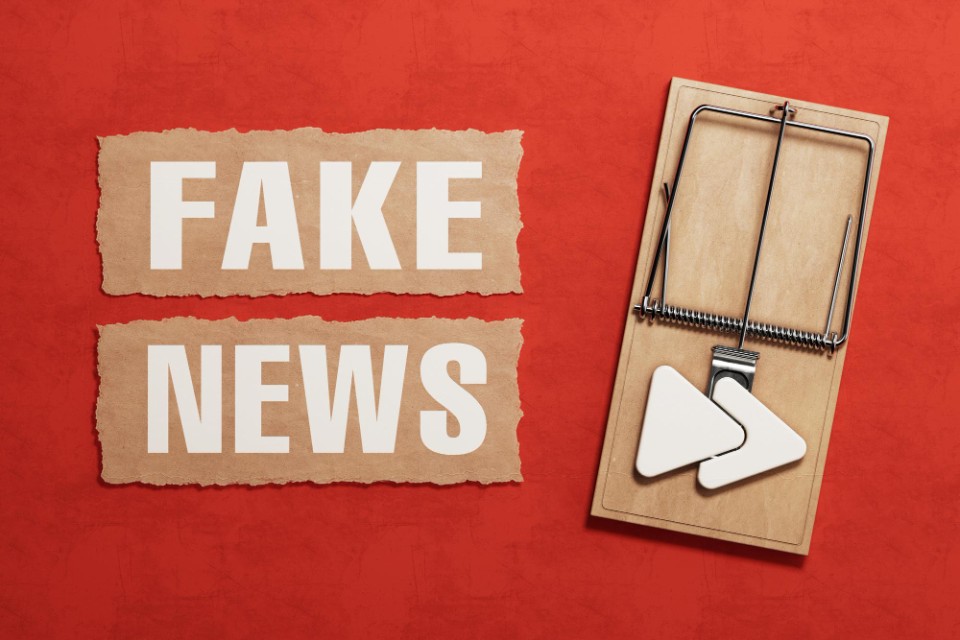In August 2023, as wildfires tore through Maui, social media filled with false evacuation maps, fake missing-person posts, and videos claiming FEMA was blocking aid.
Some posts even used AI-generated images to look more convincing, while others linked to fake donation sites. Within hours, the misinformation spread faster than official updates — confusing residents and slowing rescue efforts.
That’s the nature of misinformation. It doesn’t have to be true to have an impact. It only needs to feel urgent, emotional, and easy to share. And for founders and company leaders, that reality carries real risk.
Because if you don’t define your story early, someone else will — and their version may be the one that lasts.
This article breaks down why misinformation spreads so easily, how leaders often make it worse, and what you can do to build trust before you need it.
Why Misinformation Spreads So Easily
It’s tempting to believe that people are just gullible. But most falsehoods don’t spread because people are stupid. They spread because our brains are wired for shortcuts — mental heuristics and biases that help us make fast decisions with minimal effort.
When a message is repeated often enough, we start to believe it, even if it’s untrue. This is known as the Illusory Truth Effect. We also tend to accept stories that confirm our existing worldview, a phenomenon called Confirmation Bias. The more emotionally charged or recent a piece of information is, the more likely we are to assume it’s true — the Availability Heuristic in action.
But there’s more. People are influenced by who says something, not just what is said. If a statement comes from someone they perceive as credible or authoritative, they’re more likely to accept it without question. That’s Authority Bias. And once someone believes something, they’re often unwilling to change their mind, even in the face of contradicting evidence. That’s Belief Perseverance.
Then there’s the role of identity. We tend to align with stories and information that reinforce how we see ourselves or how we want to be seen by others. This explains why misinformation tied to social or political identity is particularly sticky.
Psychology, however, is only half the equation. The infrastructure of today’s media landscape plays an equally important role. Platforms optimize for engagement above all else. Content that generates reactions — outrage, fear, curiosity — spreads further and faster. Falsehoods are unburdened by nuance. They’re simpler, punchier, and engineered for virality.
The truth, by contrast, is slower. It’s complex, often cautious, and rarely as emotionally charged. Once misinformation spreads, the correction almost never catches up — and when it does, it rarely travels as far.

Enter AI
The rise of generative AI has amplified this problem. Tools like deepfake generators, AI voice cloning, and large language models like ChatGPT can create convincing content at scale — mimicking tone, crafting narratives, and producing fabricated videos or news reports. These technologies have already been used to impersonate public figures, manipulate elections, and manufacture fake consensus online.
The danger isn’t just the volume, but the believability. As synthetic media becomes harder to detect, and as it intersects with human bias and engagement-driven platforms, we face a perfect storm.
For leaders, that means the window to establish truth has narrowed. Waiting to respond won’t work. You need to build trust and context long before your name enters a viral thread.
Where Leaders Go Wrong With Corporate Comms
When a false story starts circling your company, the gut instinct is often to stay quiet. The thinking goes: if we ignore it, it’ll die down. If we don’t give it oxygen, it won’t grow.
But silence can be read as guilt. And in the absence of a clear narrative from you, people will fill in the blanks with speculation — or worse, with whatever version they saw online.
Other times, leaders swing in the opposite direction. They issue a reactive statement, dense with data and legal phrasing, hoping that facts alone will win the day. Or they escalate the situation — issuing cease-and-desist letters, going to war with commenters, or trying to scrub the internet of every false mention.
These strategies rarely work.
Silence invites suspicion. Over-explaining dilutes your message. And aggressive tactics often backfire by amplifying the very thing you want to disappear (the Streisand Effect). In each case, the common denominator is reactivity. You’re responding on someone else’s terms, with their framing already in place.
The most dangerous thing a leader can do when faced with misinformation is assume that logic alone will prevail. People don’t share content because it’s true. They share it because it feels right. Because it hits a nerve. And because it fits into a story they already believe.
So if you want to beat misinformation, you need more than truth. You need narrative control.
What Actually Works: Narrative Ownership
The leaders who stay ahead of misinformation aren’t just good at responding, they’re good at publishing.
The most effective approach is proactive, not reactive. If you consistently tell your story before others do, you control the context. You reduce the surface area for falsehoods to stick in the first place.
This is where prebunking comes in. Instead of waiting to correct a lie, you inject your audience with the truth — early and often. You share your values, decision-making process, roadmap, and rationale in public. That way, when someone tries to twist your story, your audience already knows what’s true.
Consistency matters here. One post won’t cut it. You need a visible track record — a rhythm of communication that builds trust over time. Weekly posts on LinkedIn. Long-form updates on your company blog. Public reflections after major decisions. These are strategic assets.
Visibility builds resilience. When a controversy hits and people search your name, they won’t just find the allegation — they’ll find a history, a pattern, and a voice.
But credibility also depends on how the message is delivered. The truth, presented blandly, often loses to the lie that feels urgent. That’s why leaders need to make the truth feel emotionally true. You do that by simplifying your message, using relatable language, telling human-centered stories, adding visuals, and repeating your core ideas across different formats.
You don’t need to be a great writer to do this. You just need to be a consistent one. Or you can hire a content marketer, if you’re too busy to handle it yourself.
Tactical Playbook for Founders
If you’re a founder or executive looking to protect your reputation and control your story, treat communications as part of your strategic infrastructure — not just marketing. Here’s a more grounded approach.
Start with monitoring. Set up Google Alerts and use tools like Mention or Brand24 to track mentions of your company, founders, products, and industry-specific keywords. Also monitor places where unfiltered opinions live — Reddit, Twitter (now X), Slack, niche Discords, Glassdoor, and Blind. Assign someone on your team to scan weekly. It’s less about surveillance and more about early signal detection.
Then, focus on prebunking. Identify your business’s common flashpoints — pricing, layoffs, funding rounds, partnerships, pivots — and write about them in advance. For instance, if you’re planning to sunset a feature, publish a short post explaining why, who it affects, and what comes next. Include context, not just a bullet list. Think of it like an internal memo written externally.
Next, publish consistently. Build a rhythm: one to three founder posts weekly on LinkedIn, one to four company blog posts monthly, one thought leadership piece weekly. For example, document decisions like why you turned down a big customer or how you handled a product failure. These context-building posts create a clear track record for future journalists, investors, or critics to reference.
Then, collaborate with credible messengers. Make a list of five to ten respected voices in your space: advisors, partners, creators, former customers. Proactively share your updates with them. Invite them to amplify your thinking. If you’ve invested in these relationships early, they’ll be more likely to step in when you need a reputational boost.
Add a layer of AI content detection. Platforms like Reality Defender and Originality.ai can help flag synthetic content that’s falsely attributed to your brand. Make these part of your issue-monitoring workflow, especially during high-stakes launches or crises.
Finally, when it’s time to respond to misinformation, don’t get baited into real-time rebuttals. Instead, post a short, calm message from your most credible voice — typically the founder. Clarify the situation without defensiveness. Don’t over-correct. And crucially, post it in a format people can quote: a plain-text LinkedIn post, not a buried FAQ update.
Your goal isn’t to fight every fire. It’s to become the default voice your audience trusts when fires break out.
Final Thought on Misinformation Spread
Misinformation thrives in silence, confusion, and emotional gaps that get filled by fast, viral stories.
If you want to lead well in the public eye, you need to treat your communication like part of the product: design it, iterate it, and ship it consistently.
The truth isn’t always enough. But when told well — and told early — it still has power.
Don’t wait for a crisis to become a credible voice. Start now.If you’d like to build trust before you need it but don’t know how to go about it, Column can help. We work with leadership teams to shape the story before the noise starts, so you’re not scrambling when things go sideways. Reach out today.

Johnson is a Content Strategist at Column. He helps brands craft content that drives visibility and results. He studied Economics at the University of Ibadan and brings over years of experience in direct response marketing, combining strategy, creativity, and data-backed thinking.
Connect with him on LinkedIn.





